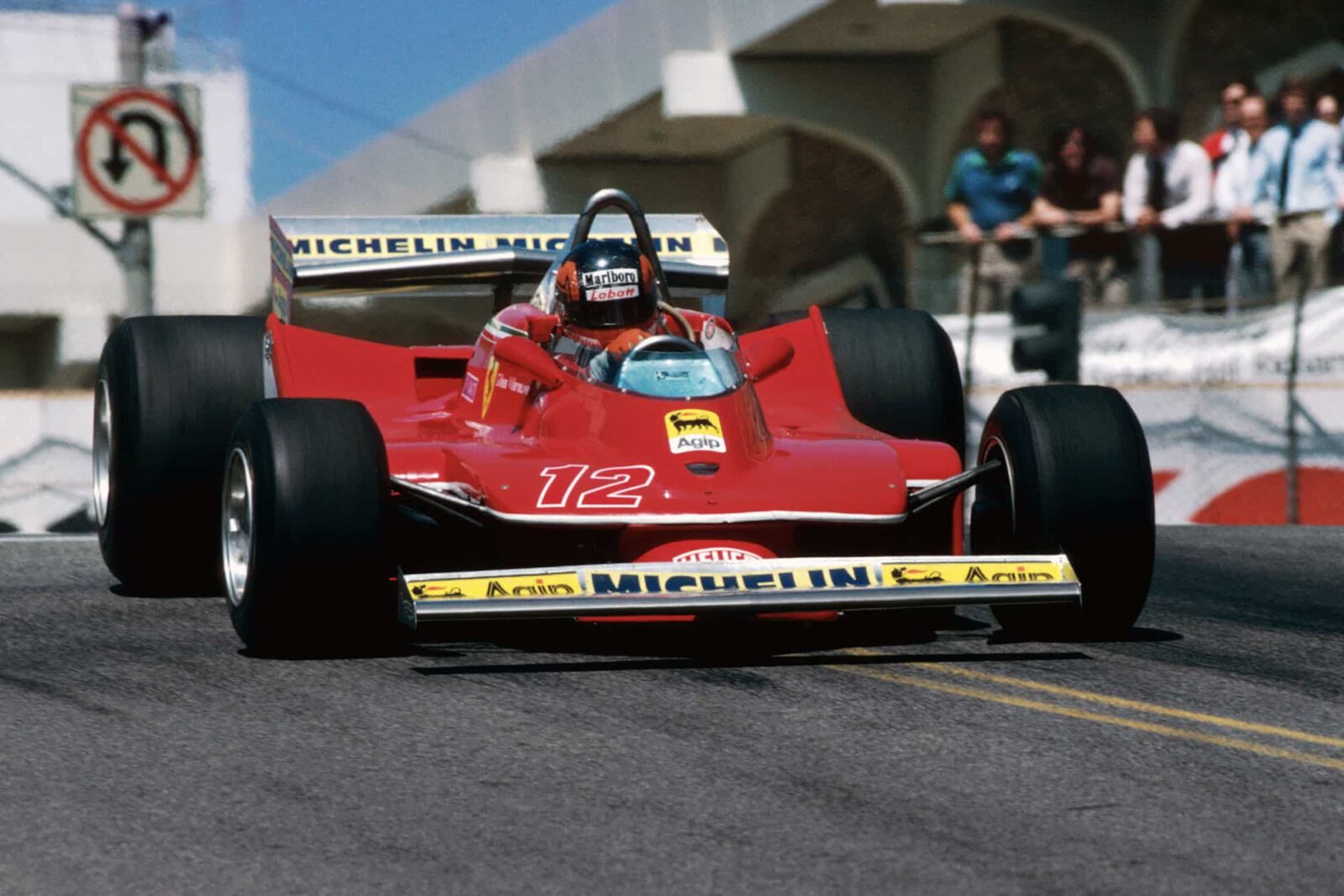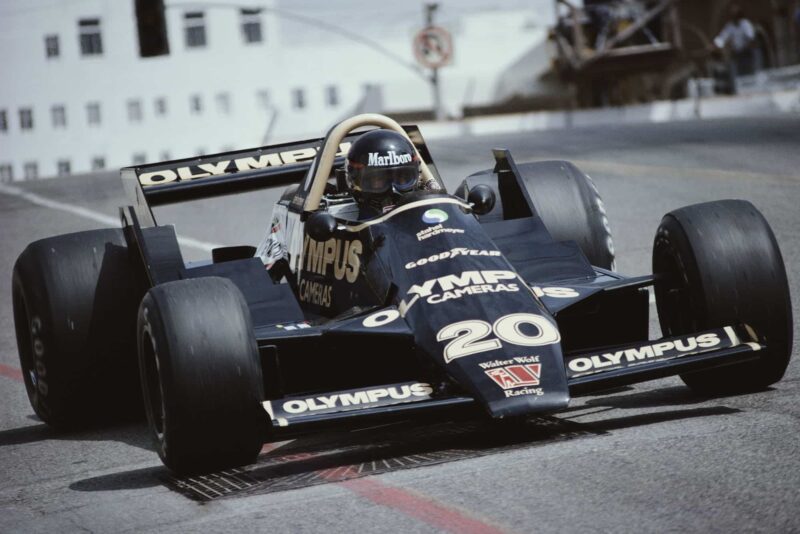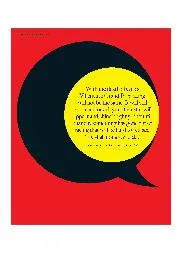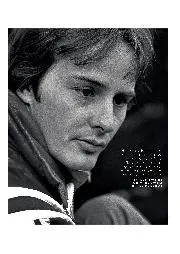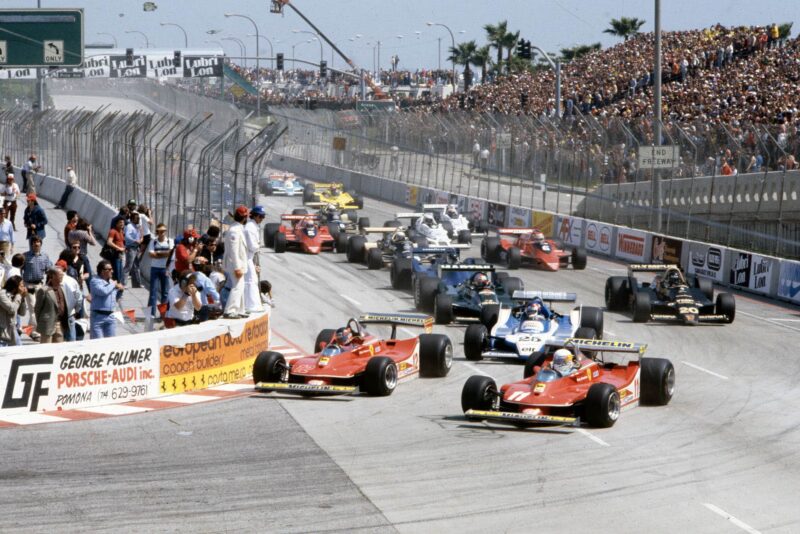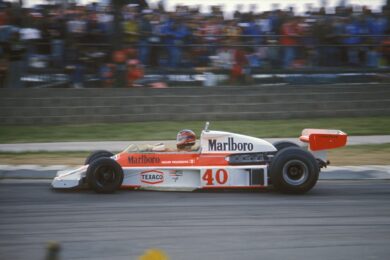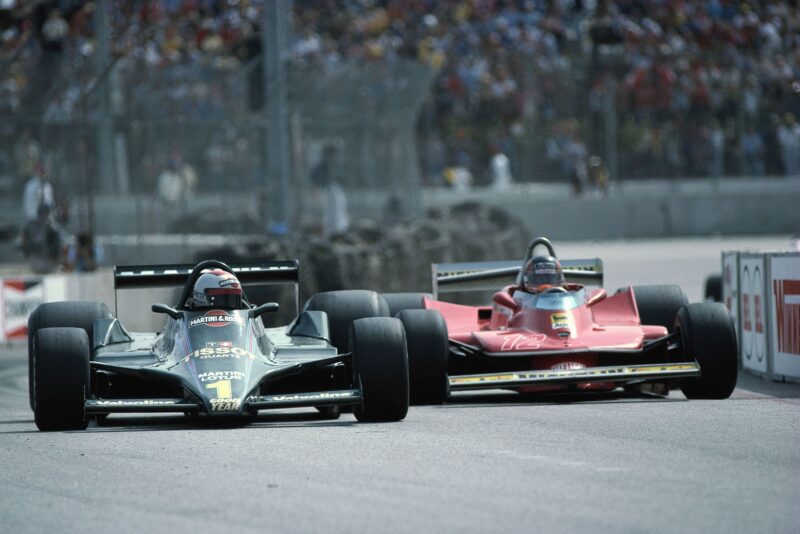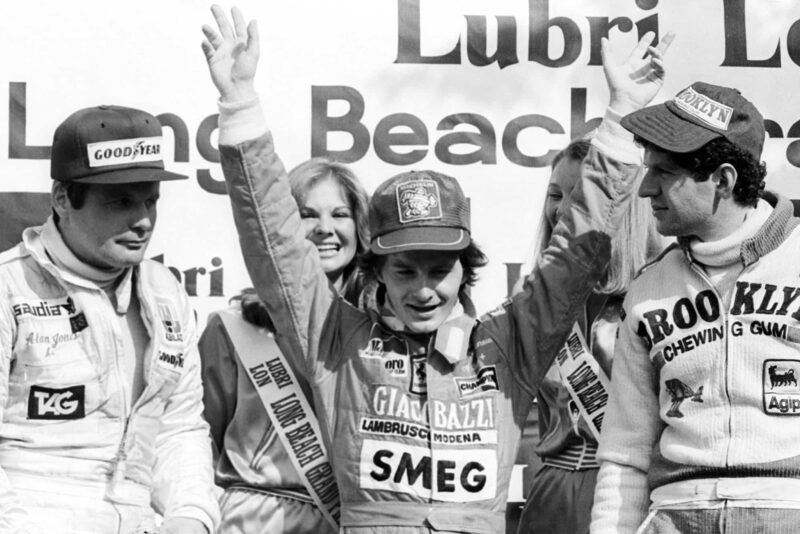While the lucky ones had lunch the pits and the paddock were very busy and the mechanics had a lot of work to do in a short time. At 12.30 p.m. the serious business of official timed practice began. Andretti was back in Lotus 79/5, Lauda was in Brabham BT48/2, but Scheckter was still in the muletta, Fittipaldi was in his old car, Jabouille was in RS01/02, the oldest of the three Renaults, but Hunt was still in the new Wolf. Another spare car had to be brought out, this time by the Shadow team, when de Angelis hit the wall on the exit of the corner before the pits. Alan Jones came walking back to the pits, having abandoned his Williams when the engine blew up and the Renault team prepared RS01/04 for Jabouille as the earlier car broke its transmission. The Ferrari drivers now both tried a new type of rear aerofoil which was wider and shorter, but more important, was mounted forward of the rear axle line. The organisation control and the breakdown lorries were well organised and disabled cars were dealt with very promptly. Twice during the afternoon crashed or broken down cars were in dodgy positions so practice was stopped while a breakdown truck whistled onto the circuit, scooped up the racing car on a tow rope or hanging from the crane and delivered it back to the pits or straight into the paddock, so quickly that the total delay was only 5 or 6 minutes.
Reutemann and Scheckter were setting the pace in the mid-1 min. 20 secs. bracket, already under last year’s fastest practice lap of 1 min. 30.636 secs., and Villeneuve and Laffite were not far behind. Andretti was still playing with tyres and adjustments to trim the car to his liking, whereas his Argentinian team-mate was not bothering, reckoning that fast laps at Long Beach were so wild and woolly, that ground-effects, trim, balance, and so forth were of little importance. Getting the right foot stuck in was all that mattered. Laffite’s efforts ended when his Ligier died on him out on the circuit; he thumbed a lift across the infield on the back of a motorcycle and went out again in the spare car. Reutemann’s driving was very impressive and he was obviously very much in tune with the conditions and ended the afternoon with best time in 1 min. 20.126 secs., but right behind him was the cool Gilles Villeneuve with 1 min. 20.186 secs. Six hundredths of a second is not a lot at an average speed of over 90 m.p.h. The order at the end of the day was Reutemann, Villeneuve, Laffite, Scheckter, Andretti, Depailler; two Lotus, two Ferrari, two Ligier, the same faces in the same places! Hunt was leading the rest with the new Wolf, and the team were fairly happy with progress. Right at the back of the field was poor Merzario who was having all manner of small teething troubles with his new car, so that he never got in a full flying lap so the time keepers were unable to record a lap time for him.
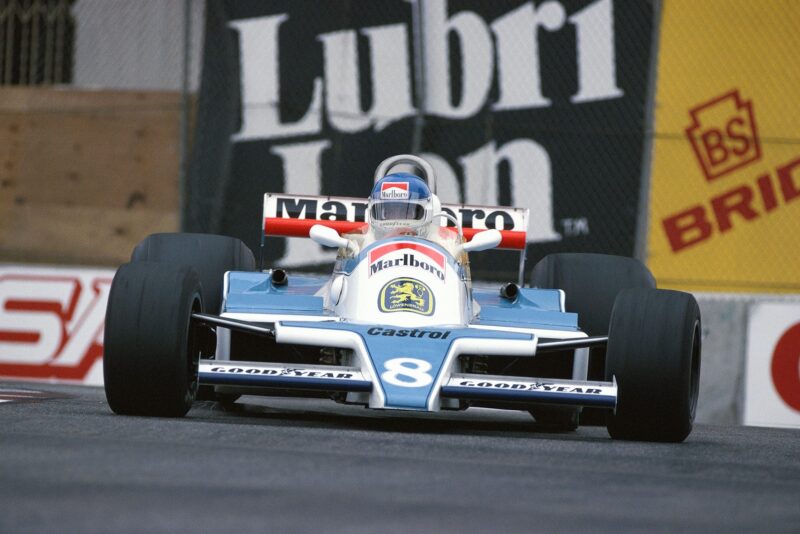
McLaren’s Patrick Tambay qualified a disappointing 19th
Motorsport Images
Saturday morning saw another untimed testing hour in fine and dry conditions and everyone except Scheckter and Fittipaldi were back to square one, with their assigned cars. Although the new Ferrari (039) was repaired, Scheckter decided to stick with the spare car (038), while Fittipaldi settled for his old F5A/1 in preference to the new F6. Elio de Angelis had no option but to use the spare Shadow as he had damaged the monocoque of his assigned car in his accident. ATS brought their spare car out and Ensign wished they had a spare car when MN09 seized its clutch withdrawal mechanism. The Renault team had a really bad morning, for Arnoux appeared in the pit lane with a merry oil fire burning around the back end, due to a fractured oil pipe feeding the turbo-charger. Not too much damage was caused, but it was the end of activity for the morning. Then Jabouille went missing in 04 and news arrived that he had had a monumental accident on the back straight at over 170 m.p.h. A drive-shaft joint had broken and locked up the transmission; the car had turned into the concrete barrier and demolished itself as it skidded and skated to a standstill. Jabouille was remarkably lucky to escape with nothing more serious than a cracked wrist, but it was the end of his driving for the day, so the Renault team had one driver fit, but no car for him and the other driver injured and the spare car available for him. It was no surprise that the French looked glum.
The Brabham team felt once again that they had sufficient down-force from their ground-effects so they removed the fins from the noses of both cars, automatically improving the air flow into the sidepods. Both Ferraris were still using the forward-mounted rear aerofoils, and Andretti was still fiddling with adjustments to try and match the times of his team-mate. While brakes were obviously getting a hammering, it was the drive-shafts that were beginning to become the Achilles heel. Reutemann was towed in with the left-hand shaft broken at its outer end, having snapped off like a carrot alongside the circlips groove. This was the first time a drive-shaft had failed on a Lotus 79. Right at the end of the hour Fittipaldi came to rest with a broken universal joint on the left-hand driveshaft, and Hunt had come to a stop with an electrical fault.
After lunch it was still fine and dry, but a cool breeze was blowing, in fact conditions were ideal for fast motoring and everyone rose to the occasion. Villeneuve was experimenting with the two types of rear aerofoil on his Ferrari, while Scheckter had settled for the forward-mounted one. In the morning test session Lauda felt that the V12 Alfa Romeo engine in his Brabham was getting tired, so sent it away to have a new one installed. The work was not completed by the time the final session began, so he started out in the spare BT48. He soon decided that it wasn’t good enough for him, so sat in the pits and waited for his own car to be finished. Meanwhile his young team-mate was getting on with the job and recording some reasonable times. Arnoux was still in troublewith his Renault, the outer universal joint on the left-hand drive shaft breaking, while poor Jabouille had to watch from the side-lines with his right wrist in plaster. There was a lot of hard trying right through the field as witnessed by the number of spins and near-misses that were reported by course marshals, but nothing serious was reported. The lap times of the top group were coming down dramatically and whereas yesterday anything in the 1 min. 20 sec. bracket was good, today the top runners were well down into the 1 min. 19 secs. bracket. Then Reutemann set an entirely new standard with a lap in 1 min. 18.886 secs. and the two Ferrari drivers rose to the occasion and also got below 1 min. 19 secs. Depailler and Laffite were within a whisker of breaking the “ace” barrier, though Andretti was half a second adrift. Scheckter gave his all and clocked 1 min. 18.911 secs., which got him on the front row of the grid alongside Reutemann, and just as he stopped in the pits it was reported the Villeneuve had taken pole position with an incredible 1 min. 18.825 secs., this with the old-ype rear aerofoil mounted behind the rear axle line. Reutemann was still very much on form and looked set to snach fastest time back when he failed to appear. The other drive shaft had broken this time! And that was that. We had Villenuve, Reutemann and Scheckter below 1 min. 19 secs., and Depailler, Laffite, Andretti, Jarier, Hunt, Patrese and Jones below 1 min. 20 secs. and anything over 1 min. 23 secs. out of the running. Once again there was six-hundredths of a second between Reutemann and Villeneuve, this time to the advantage of the little French/Canadian. That so small a gap separated two such varied combinations was remarkable. V8 engine versus flat 12 engine, Goodyear tyres versus Michelin tyres, gearbox out the back versus gearbox transversely in front of the axle line, Italian suspension geometry versus English; two more different cars would be hard to find.
